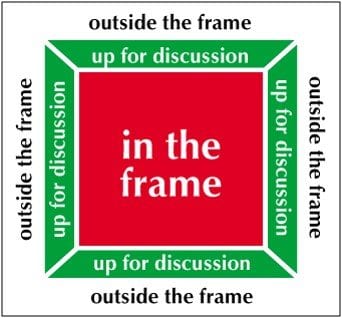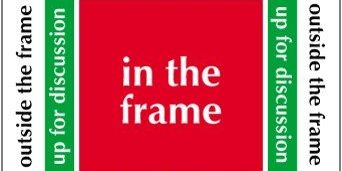The debating and decision made last week brings to mind a tool that is used in Lean Six Sigma projects, and any other project, to determine what is In and what is Out of scope.
One of the most important things to have in place when starting a project is a clear scope. Without this, it can be very difficult for project stakeholders to understand what will be affected by the project, the effort involved, the timescales and the results that can be expected. ‘Managing Expectations’ is vital. This is defined in my Oxford Dictionaries google search as, ‘seeking to prevent disappointment by establishing in advance what can realistically be achieved or delivered by a project, undertaking or course of action’.
The tool used is very simple.
- Draw a picture frame onto a flipchart or large sheet of paper. Label the area inside the frame as ‘In’. Label the area outside of the frame as ‘Out’. Label the frame itself as ‘Up for discussion’.
- Brainstorm various issue on to Post-Its. These could be related to customers or market segments in or out of scope, products, services, geographical regions, people affected, systems involved etc
- Place the Post-Its in what appears to be the most appropriate position
- Review and discuss all of the items with stakeholders
 Following the review and decisions made, seek to move all of the ‘Up for discussion’ items either In or Out
Following the review and decisions made, seek to move all of the ‘Up for discussion’ items either In or Out
This very simple tool brings clarity for stakeholders and helps to manage their expectations. And after achieving clarity, the work must begin to deliver the project. For this the project lead must create unity.
There is something in the following quote to bring comfort to project leads, and other stakeholders:
“There are no guarantees or crystal balls for the future, and there’s no absolute way to know if you are or aren’t making the right decision. Give tomorrow the best possible chance that you can”.
(Kenneth Dino)








